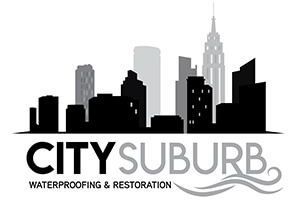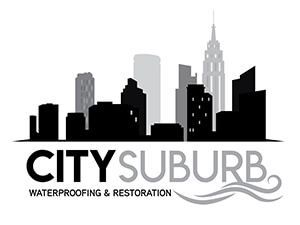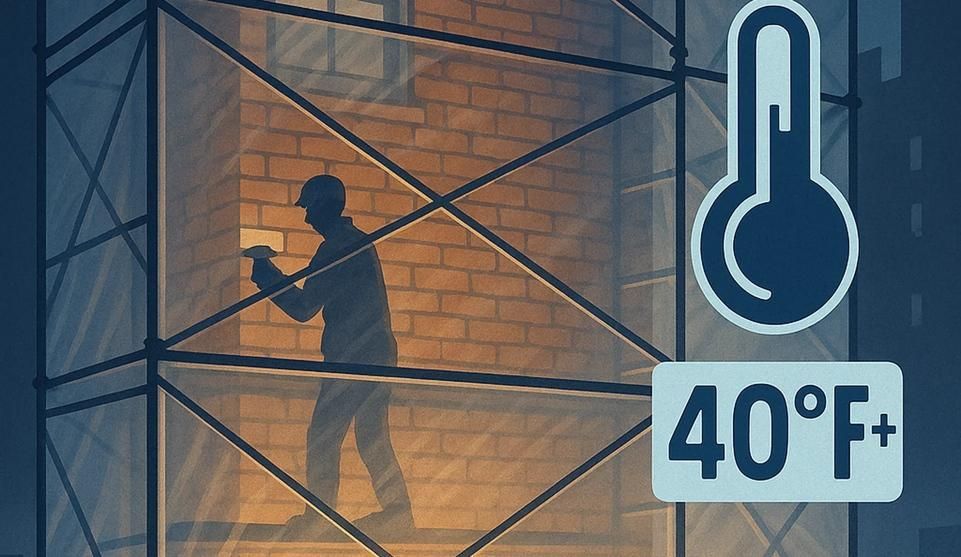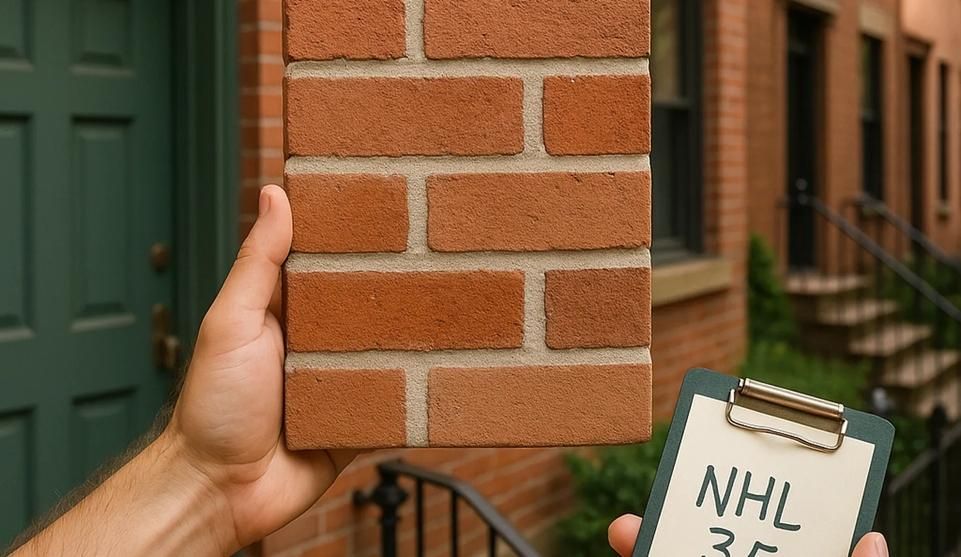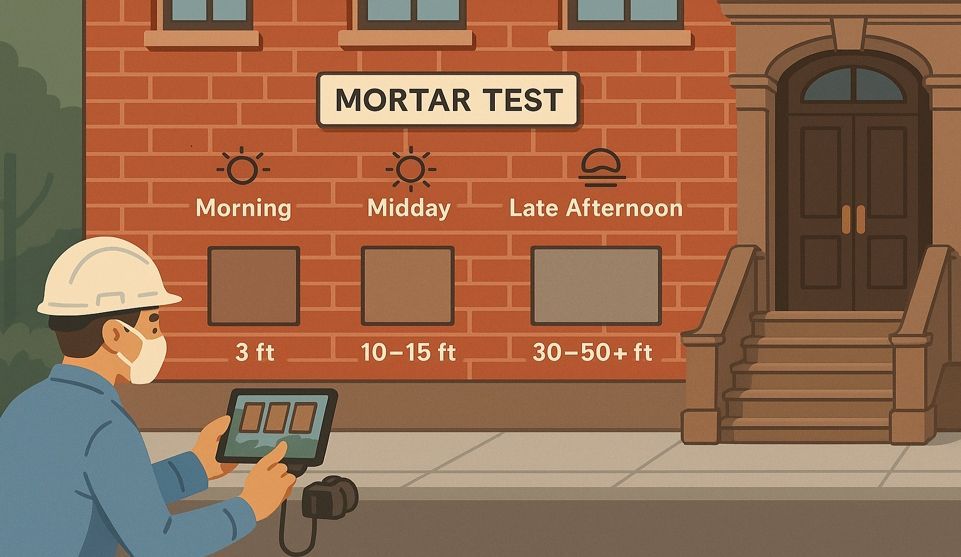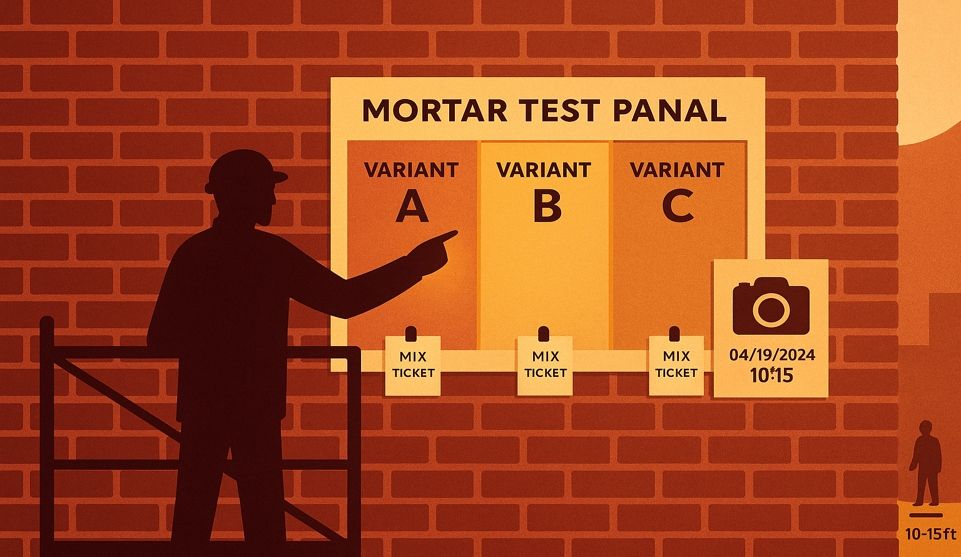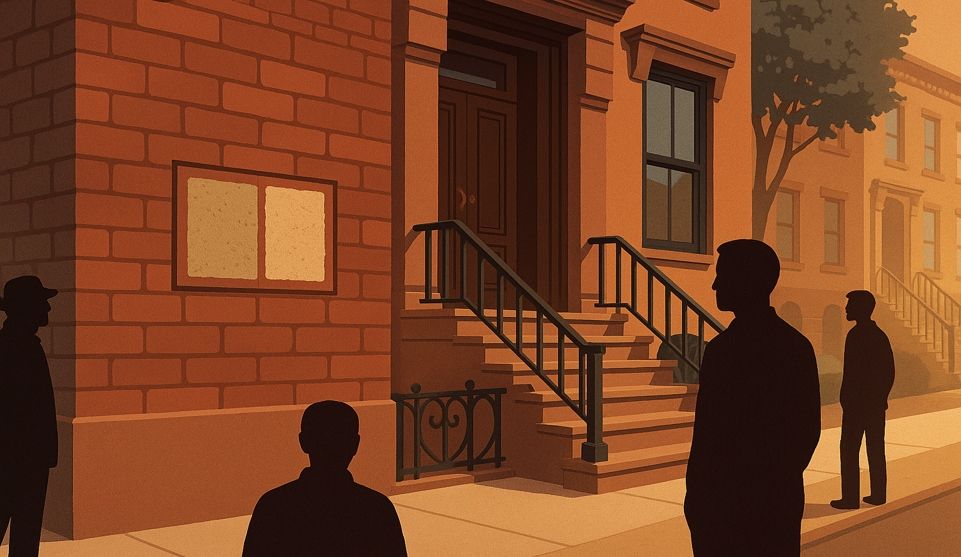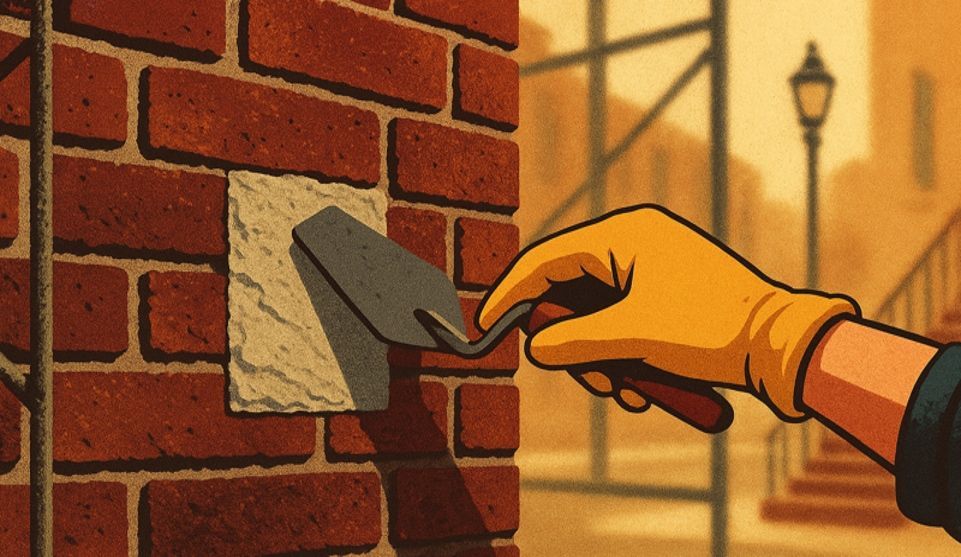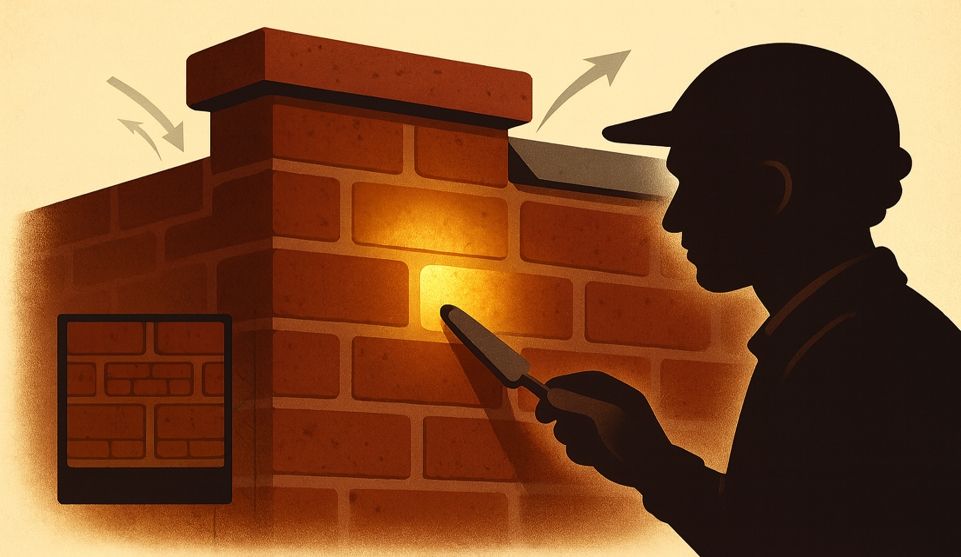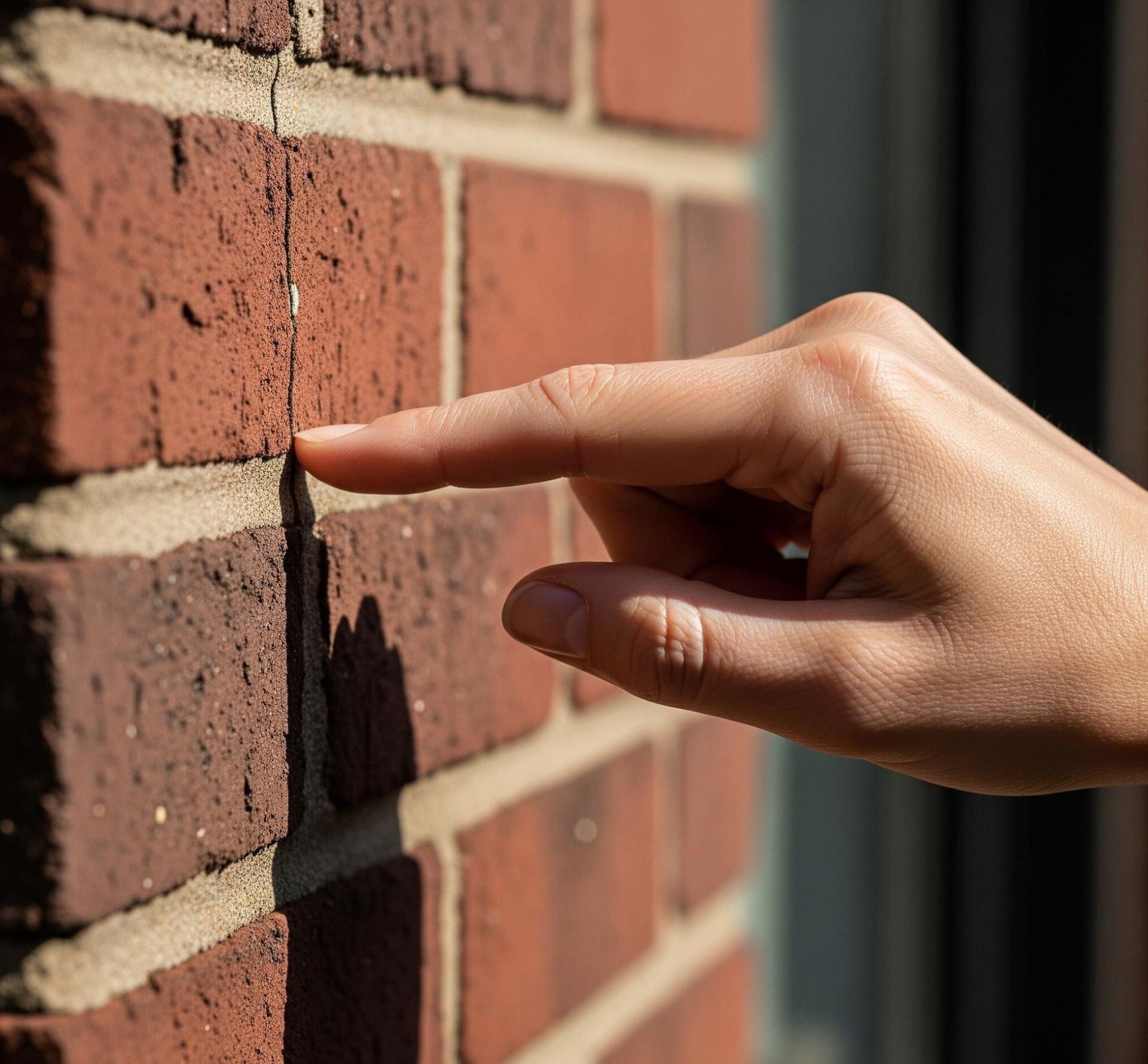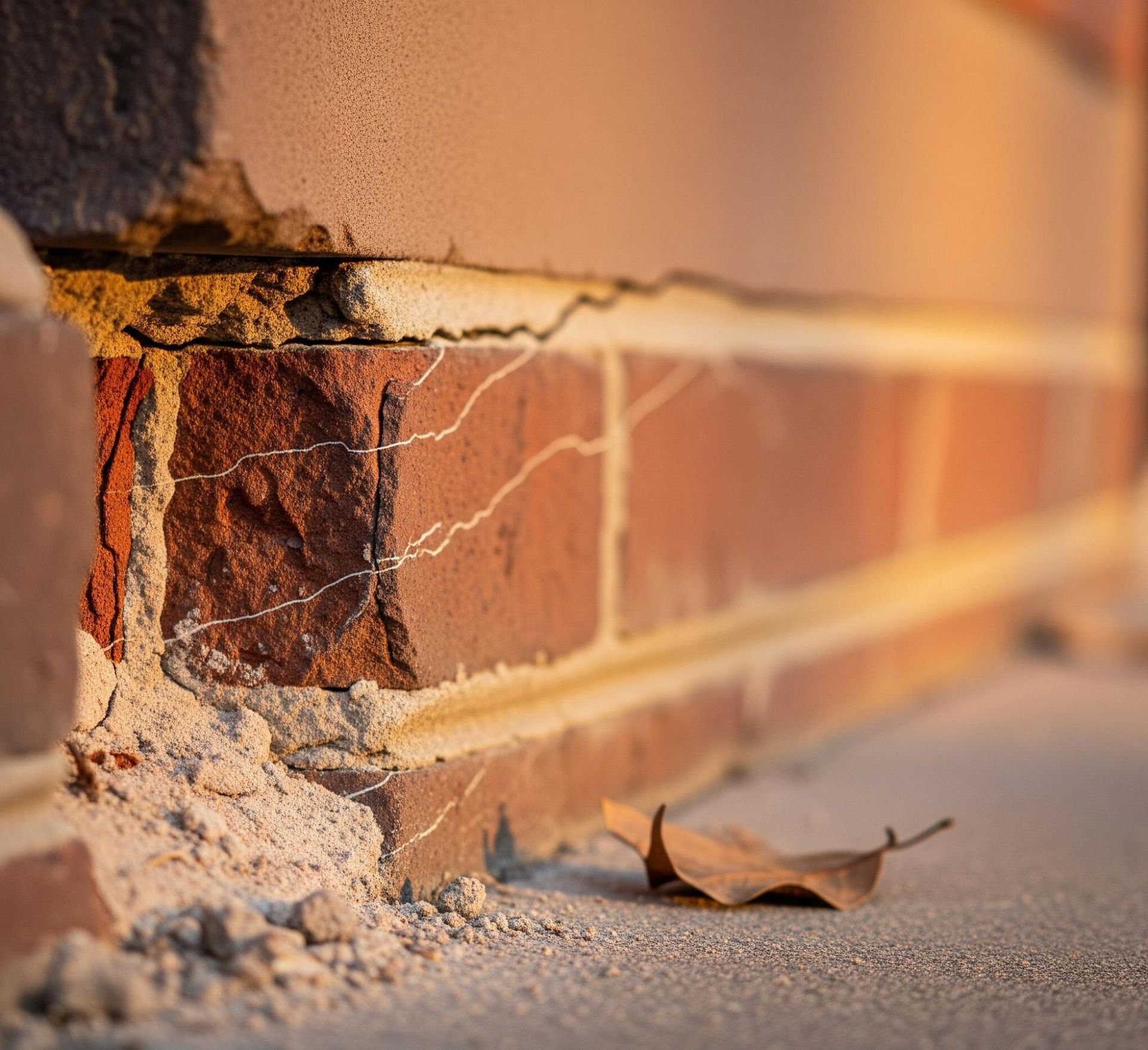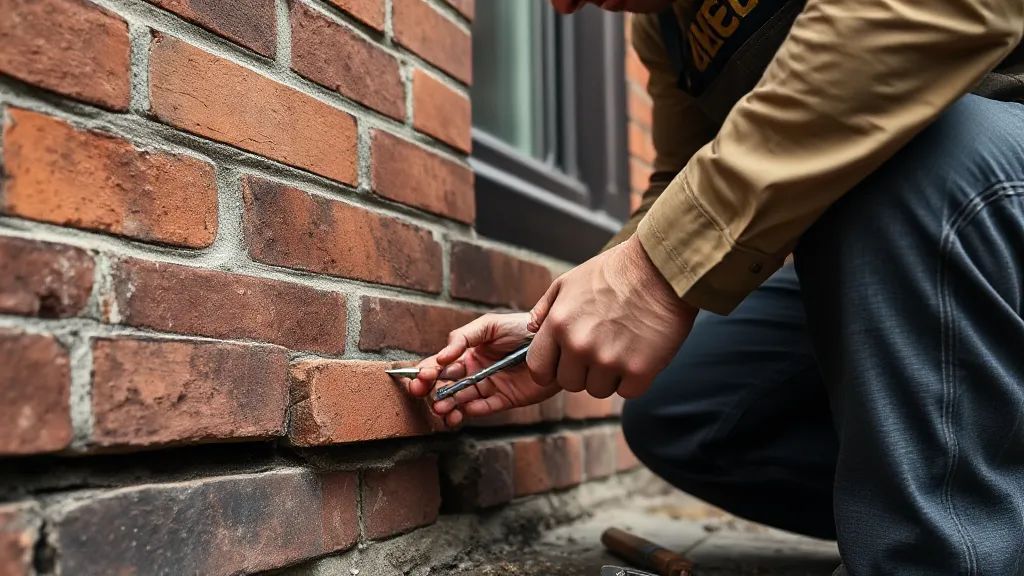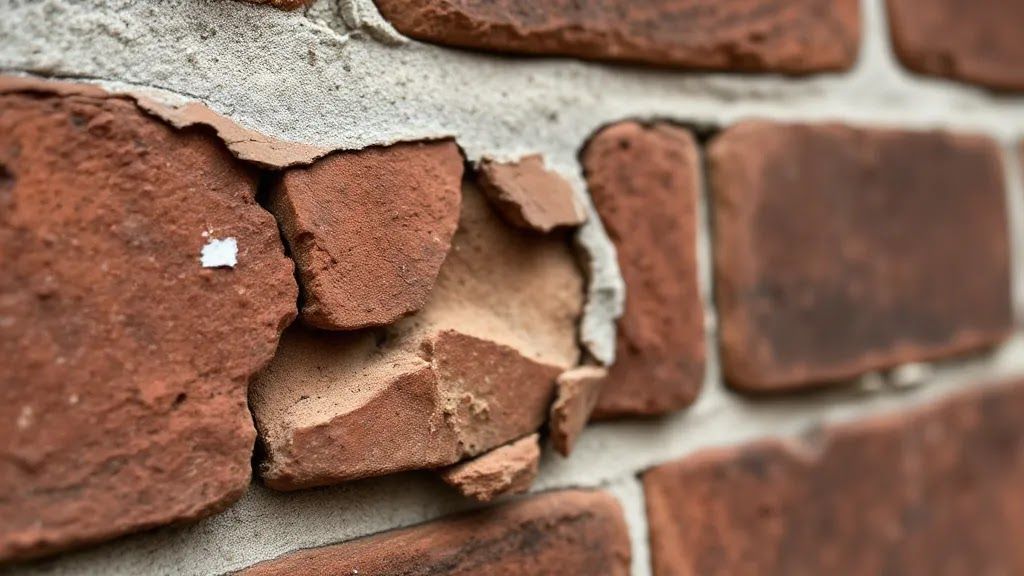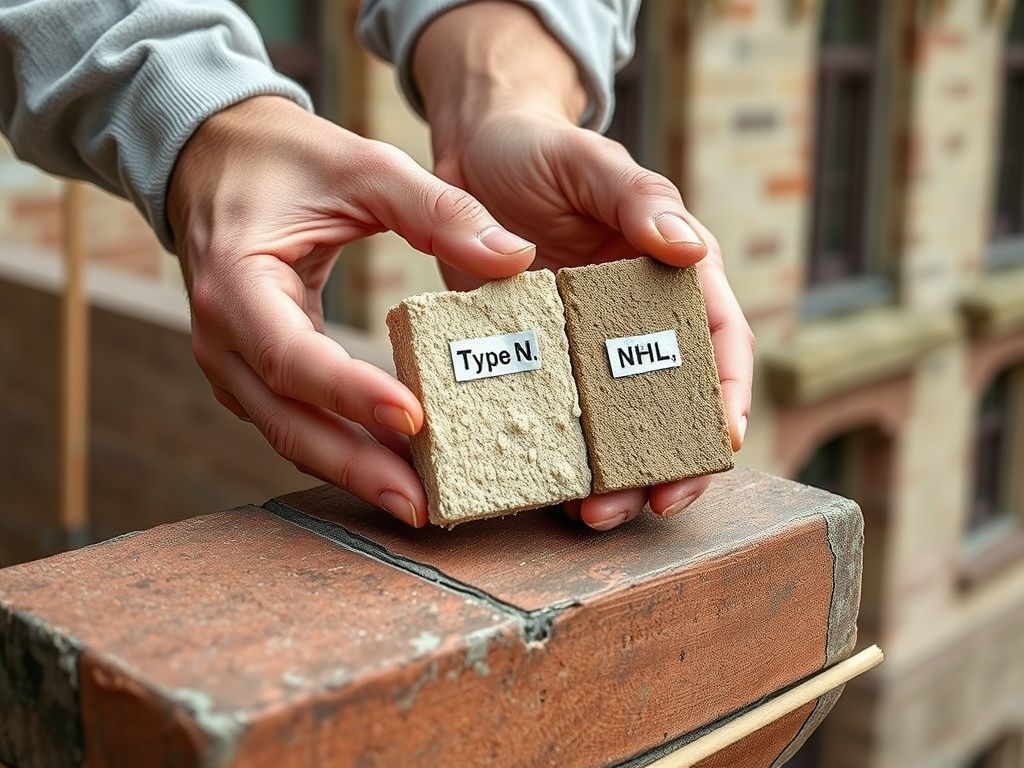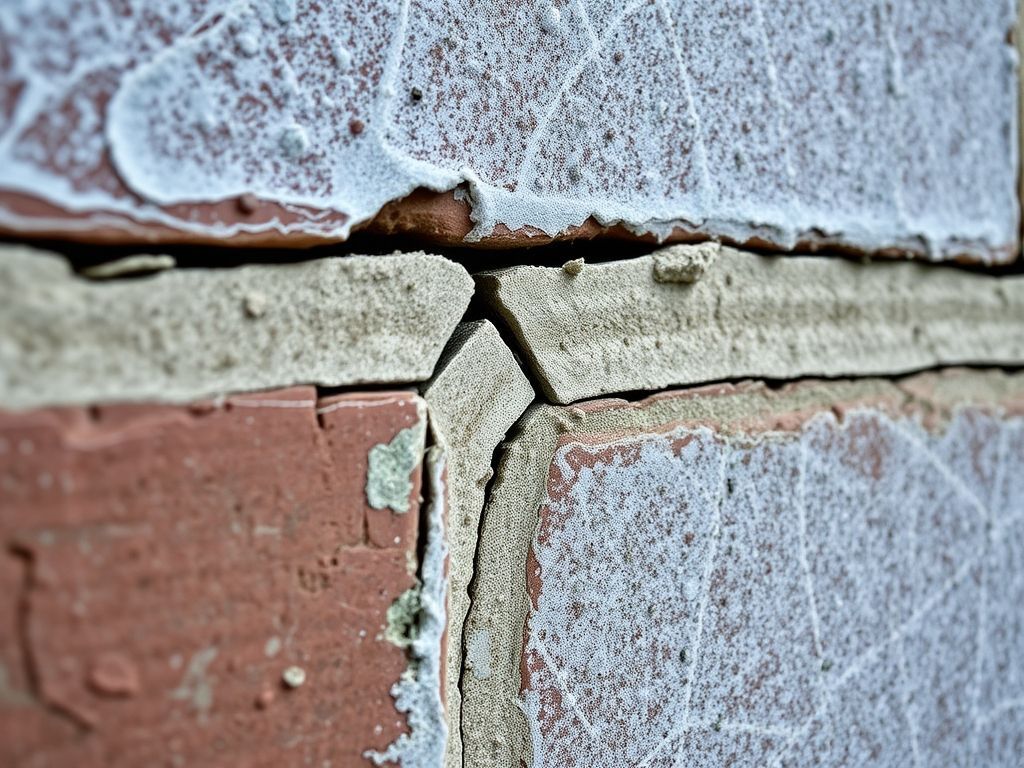When Neglected Facades Create Liability: The Asset Protection Framework for Commercial Building Restoration in Brooklyn
📌 Key Takeaways
Stop treating facade work as cosmetic—protect the asset, reduce liability, and get approvals faster.
Adopt the Asset-Protection Lens: Position facade restoration as a capital investment that lowers lifecycle cost, mitigates safety risk, and supports compliance.
Lead With Risk and Root Cause: Diagnose water paths first and tie scope to FISP cycles and annual parapet obligations to make the business case undeniable.
Run the Six-Phase Playbook: Move from assessment and root-cause diagnosis to budgeting, durable materials, safe execution, and documented compliance to align owners, engineers, and tenants.
Prioritize Parapet Integrity: Treat parapets as the top-priority failure point and resolve roofline waterproofing, copings, and movement before they become violations or unsafe conditions.
Bundle Scopes to Avoid Rework: Combine parapet repairs, lintel replacement, and repointing under a single access plan to cut mobilizations, disruption, and repeat spend across inspection cycles.
Protect value. Control risk. Win approval.
By the City Suburb Insights Team
Stop the slow bleed.
A conference room in Downtown Brooklyn. Tenants have emailed photos of spalling brick and stains around window heads. The owner wants a quick patch. The engineer wants a scoped, code-compliant plan. The calendar says “budget meeting, Friday.”
If that sounds familiar, here’s the point: facade work in Brooklyn isn’t a discretionary cosmetic. It’s a risk control decision with legal, financial, and safety implications. Treat it that way and approval conversations get clearer, faster, and frankly—less combative.
Imagine the alternative. A structured plan that quiets tenant complaints, satisfies engineering standards, and arms the owner with a capital-preserving narrative. That’s what the Asset Protection Framework delivers.
Beyond the Quick Fix: From Expense to Investment
Facade restoration for Brooklyn commercial buildings is best understood as asset protection because it reduces lifecycle costs, mitigates safety risk, and aligns with mandatory inspection regimes for buildings over six stories. Why it matters now: the visible defect is rarely the root cause; water infiltration at parapets, joints, and lintels often drives recurrent damage and disputes later.
Organizational reality: property managers are asked to balance a cost-effective visible fix for tenants against a comprehensive structural remedy that owners and engineers know will last. The following framework helps the team choose the durable option—without losing momentum or trust.
“A facade restoration isn’t an expense; it’s a capital investment in the long-term viability and safety of your asset.”
Skim point: Answer first, evidence second. Each section below opens with the conclusion, then unpacks the reasoning.
The True Cost of Neglect: Financial and Legal Liability in Brooklyn
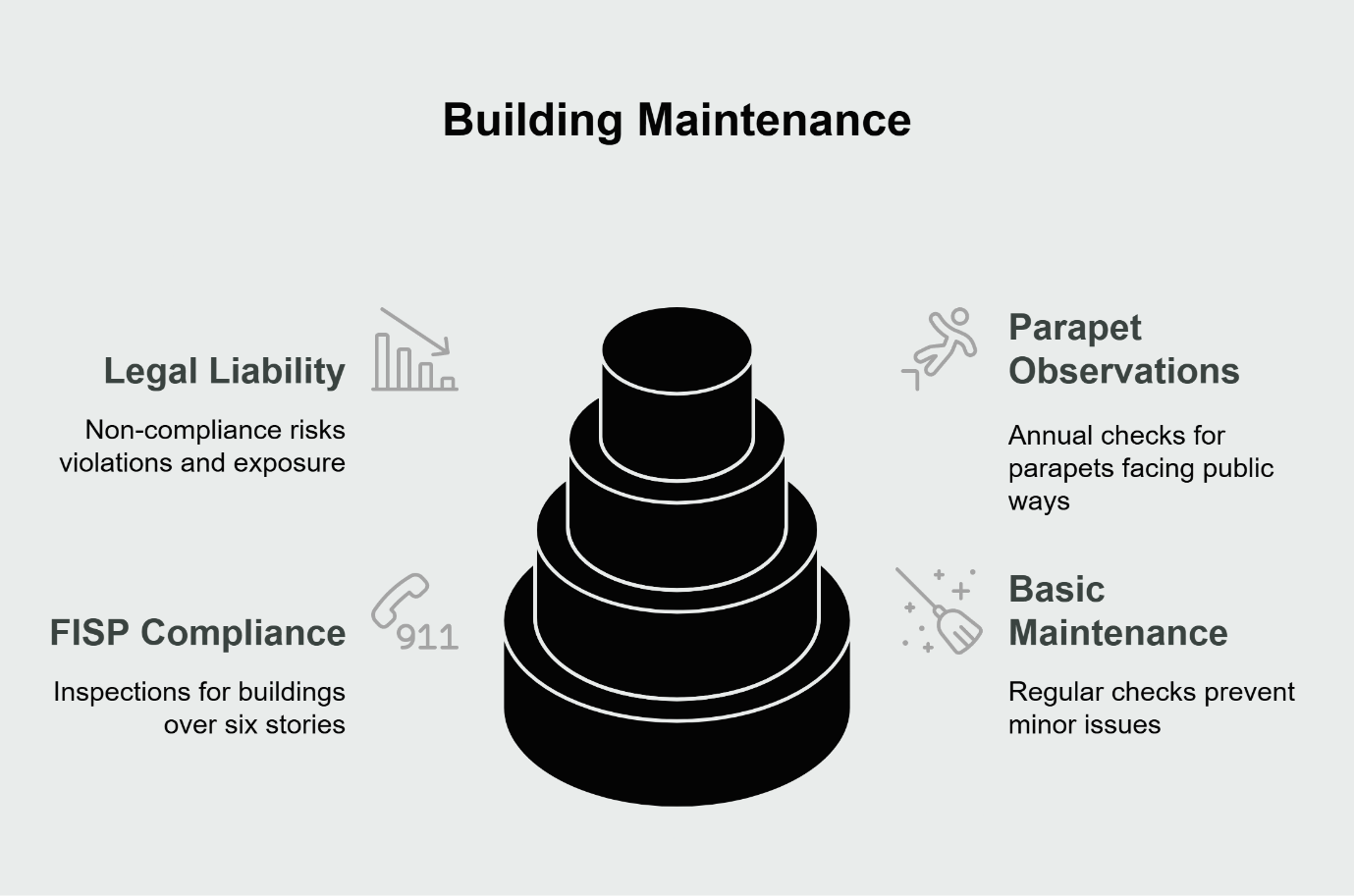
Deferred facade maintenance raises total lifecycle cost and increases liability because small openings compound moisture movement, accelerate material decay, and ultimately force larger interventions later (generally accepted building-science practice). The Façade Inspection & Safety Program (FISP) requires owners of buildings over six stories to have exterior walls and appurtenances inspected every five years and to file a technical report with the NYC Department of Buildings—non-compliance risks violations and exposure. New York City Government
In addition, annual parapet observations are now required for any building with a parapet fronting a public right-of-way in NYC, regardless of height (with limited exceptions), and unsafe conditions trigger immediate notifications and protections. These obligations formalize what prudent managers already do: surface hazards early and address root causes. New York City Government
Publishing note for stakeholders: the rule framework referenced here derives from 1 RCNY §103-04 (periodic facade inspections), which governs how qualified exterior wall inspectors perform and document examinations. It also clarifies that close-up, physical examinations are required—remote methods alone don’t suffice. New York City Government, American Legal Publishing
The Asset Protection Framework: A Step-By-Step Guide for Stakeholder Alignment
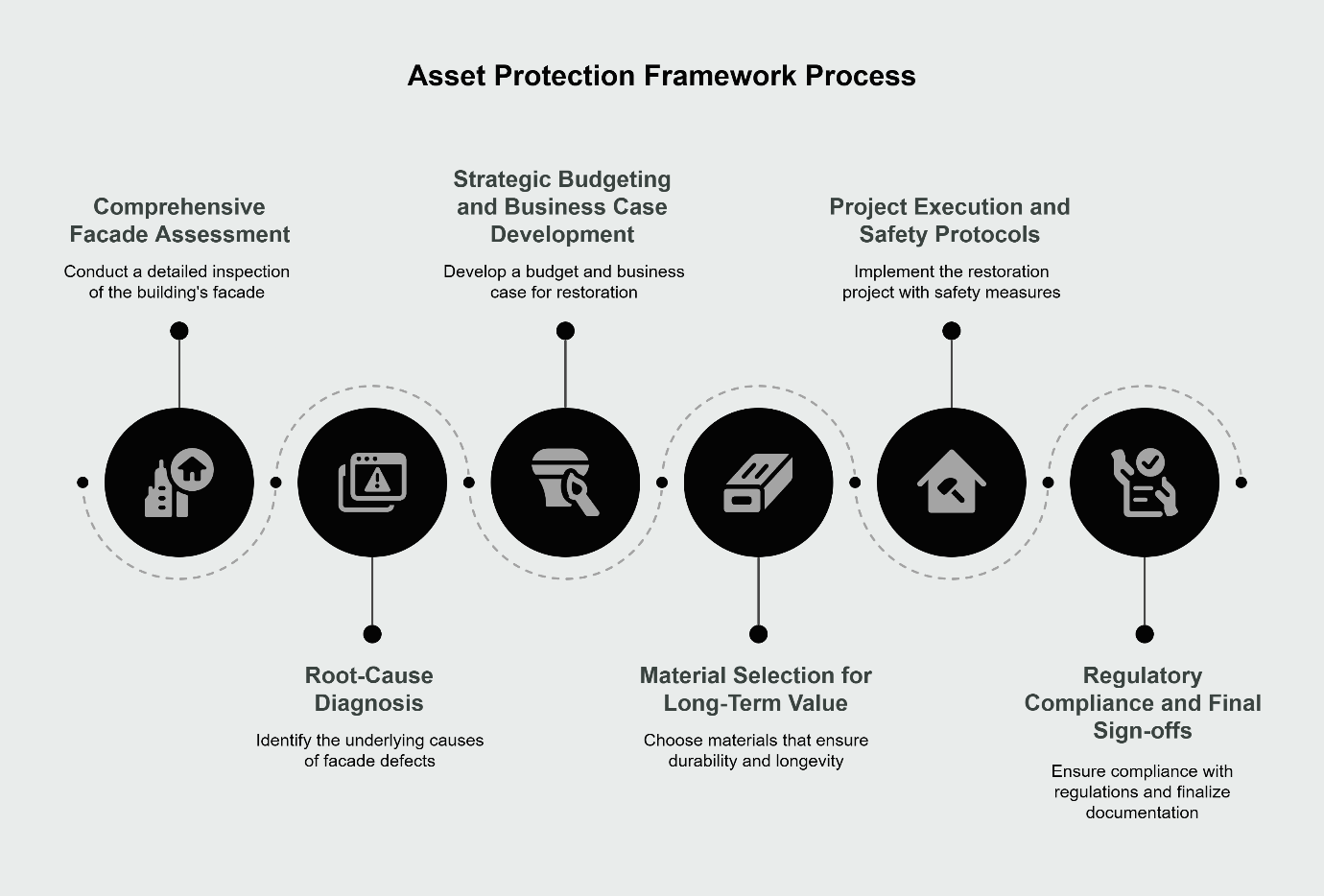
Direct answer: a six-phase process creates consensus by tying each step to what each stakeholder values most—safety and durability for engineers, risk reduction and predictable cash flow for owners, and visible progress for tenants.
Brand POV frame (one sentence): The Asset Protection Framework treats facade restoration as a proactive investment that protects value, not a reactive cost.
In-article visual suggestion: include a simple line chart comparing “Cost of Repair Over Time (deferred maintenance)” against “One-time Comprehensive Restoration” to visualize the compounding effect of delays.
Framework (numbered for clarity and reuse):
Phase 1: Comprehensive Facade Assessment (For the Engineer)
Lead a qualified exterior wall inspection to document conditions from grade to parapet, prioritizing known moisture paths (generally accepted practice; FISP governs scope for over-six-story buildings). Define severity and access requirements up front to avoid later scope drift. New York City Government, American Legal Publishing
Phase 2: Root-Cause Diagnosis (For the Owner’s Peace of Mind)
Translate observed defects into causal chains: parapet cracks → water entry at roofline → freeze-thaw cycling → displaced masonry → ceiling leaks. Tie each recommended repair to the risk it neutralizes so the owner sees cost aligned with exposure.
Phase 3: Strategic Budgeting and Business Case Development (For the Owner)
Present a side-by-side: short-term patch vs. root-cause restoration, including carry costs of repeated access, disruption, and risk premiums. Avoid inflationary surprises by aligning phasing with FISP cycles and tenant calendars (context-dependent implementation).
- For masonry joint failures, consider bundling with Brick Pointing in Brooklyn to capture mobilization efficiencies.
- For scope requiring specialized trades, target Masonry Contractors in Brooklyn with code-competent facade experience.
Phase 4: Material Selection for Long-Term Value (For the Engineer & Owner)
Specify materials and details that reduce water entry at high-load locations (parapets, copings, shelf angles, lintels). Balance longevity and constructability; detail transitions precisely. When lintel corrosion is present, coordinate Window Lintel Replacement within the same access event to prevent re-mobilization later.
Phase 5: Project Execution and Safety Protocols (For Tenants & the Public)
Sequence work to minimize tenant impacts while maintaining required protections at the right-of-way. Plan access (scaffolding, platforms) once and use it to complete grouped scopes (context-dependent).
Phase 6: Regulatory Compliance and Final Sign-offs (For Legal Peace of Mind)
Close out with documentation that satisfies NYC requirements for applicable buildings and codifies a preventive maintenance schedule tied to known risk points (e.g., parapets, joints, lintels). This locks in repeatable diligence, aligning future inspections with owner objectives. New York City Government
Outcome line: Used as intended, the framework converts a contentious “spend” into a defensible plan to protect capital value, control risk, and quiet complaints—in that order.
Helpful internal resources:
- For recurring moisture at foundations, coordinate with foundation waterproofing in Brooklyn to close the loop from roofline to grade.
A Critical Failure Point: Why Parapet Wall Integrity Matters
Direct answer: parapet walls are a top-priority failure point on commercial buildings because they sit at the roofline—the first line of defense against wind-driven rain—and compromised parapets accelerate the very water damage owners fear. (Core assertion; widely recognized by facade engineers.)
Triple-Then-Bridge (explicit): A comprehensive Building Facade Restoration in Brooklyn prevents problems with parapet wall repair. It does so by addressing roofline waterproofing, copings, and masonry movement before deterioration escalates into loose units and unsafe conditions.
Triple-Then-Bridge (explicit): A comprehensive
Building Facade Restoration in Brooklyn solves pain points that show up as parapet wall repair. It achieves this by eliminating upstream infiltration paths and stabilizing the parapet assembly, reducing rework and violations.
Regulatory reality: NYC now requires annual parapet observations on buildings with parapets along public ways, with immediate reporting and protections when unsafe conditions are found—underscoring why parapets merit priority in scope and budgeting. New York City Government
Practical linkage: When discussing critical failure points in your proposal, include a critical failure point like parapet wall repair to anchor owner attention on the highest-leverage items first.
Protecting Your Asset, Advancing Your Career
Direct answer: the fastest way to gain owner approval in Brooklyn is to lead with risk and root cause, tie scope to the FISP and parapet obligations where applicable, and show the cost delta between “patch” and “protection” across the next inspection cycle. The result is a plan that owners can fund and engineers can sign.
Illustrative scenario (third-person): Consider a mid-rise office building on Flatbush Avenue with staining at window heads and hairline coping cracks. A patch quiets complaints for a season—or rather, for a few months—until freeze-thaw returns. A diagnostic assessment reveals displaced parapet cap stones as the starting point. A bundled program—lintel replacement where needed, parapet reconstruction, repointing, and waterproofing—resolves the cause, not just the symptom. Tenant calls drop. The five-year report is filed cleanly. And capital is preserved.
Real-talk moment: Look, this is the part where most teams get tripped up—the business case. Don’t underestimate the cost of doing the same access work twice. Combine scopes that share access, and show owners the total avoided mobilizations, violations, and disruptions. That’s the approval lever.
Forward-looking vignette (career evolution): Three years from now, the same manager is a regional asset lead reviewing a portfolio dashboard. Buildings are synchronized to inspection cycles, parapets show green status, and CapEx curves are smoother. The playbook hasn’t changed—diagnose, prioritize, bundle, document—but confidence has. That’s what method buys.
Ready to Reduce Risk and Protect Value?
Schedule Your Free On-Site Inspection. A structured assessment in Brooklyn—aligned to owner objectives, engineering standards, and local compliance—turns a visible problem into a durable plan.
Notes on Certainty and Practice
- Verified regulatory requirements (NYC):
- FISP mandates five-year facade inspections and reporting for buildings over six stories. New York City Government
- Annual parapet observations apply to buildings with parapets fronting public ways; unsafe findings require immediate action. New York City Government
- 1 RCNY §103-04 governs inspection methods and reporting; close-up examinations are required. New York City Government, American Legal Publishing
- Generally accepted practices (building science):
- Water infiltration is the dominant driver of facade deterioration; controlling moisture at parapets, joints, and transitions is foundational to durability. Whole Building Design Guide, US EPA
- Context-dependent concepts:
- Bundling scopes (e.g., lintels, repointing, parapet work) under a single access plan is often cost-effective but depends on site conditions, tenancy, and phasing windows.
- Budget models and schedule phasing should align with each property’s inspection cycle, use type, and owner risk tolerance.
Our Editorial Process
Our expert team uses AI tools to help organize and structure our initial drafts. Every piece is then extensively rewritten, fact-checked, and enriched with first-hand insights and experiences by expert humans on our Insights Team to ensure accuracy and clarity.
By the City Suburb Insights Team
'The City Suburb Insights Team is our dedicated engine for synthesizing complex topics into clear, helpful guides. While our content is thoroughly reviewed for clarity and accuracy, it is for informational purposes and should not replace professional advice.'

